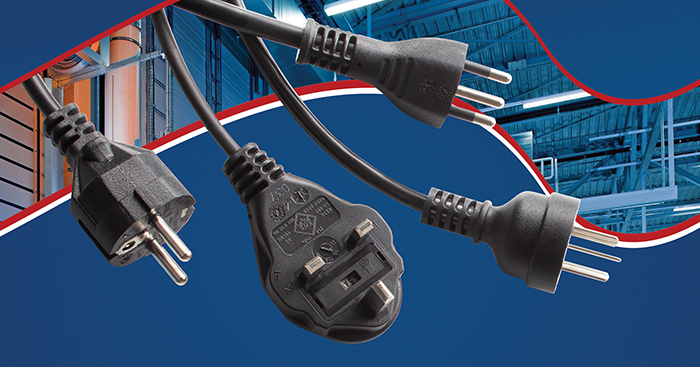Four Key Decisions in Selecting Country-Specific Cords & Cord Sets
Posted on 3/21/23 11:31 AM

The selection of country-specific power cords and cord sets is vital for manufacturers and exporters as to ensure compliance with country-specific plugs and power cords, North American and international cable, and components. Choosing a cord or cord set usually involves five steps:
- Identify the Correct Plug
This is an essential, and Interpower offers a Guide to Worldwide Plug and Socket Patterns and Power Mains (Single-Phase) which provides frequently specified plug patterns by country. “When deciding on the correct plug pattern, keep in mind that while some plugs may look similar, it doesn’t mean it’s the right plug for the product,” said Ron Barnett, Product Development Manager at Interpower. “For example, the plugs used in Argentina, Australia, and China have similarities in appearance, but have important differences between them and cannot be used interchangeably within those countries,” Barnett said.
- Determine the Rating of the Power Cord or Cord Set
Amperage and voltage ratings are standardized by agencies representing different countries and regions. “Higher or lower amperage can mean a different plug pattern, even in the same country,” Barnett said. “Amperage requirements affect the cable size. North America uses a different voltage, amperage, and frequency compared with most other countries.” The Guide to Worldwide Plug and Socket Patterns and Power Mains (Single-Phase) provides information on voltage and frequency requirements.
- Choose the Correct Cable
North American cable is different from international cable, which in turn is different from Japanese or Chinese cable.
“North American cable cannot be used in countries where international cable standards are in place and vice versa,” Barnett said. In other words, removing a North American plug from a cord set made with North American cable and replacing it with a Continental European plug will not make the cord set acceptable for Europe.”
- Choosing the Correct Connector When Utilizing a Cord Set
If exporting globally, consider incorporating IEC 60320 components into the product design. “The advantage of using an IEC 60320 component is that it can assist in making the product globally accessible,” Barnett said. “An IEC 60320 connector can be attached to a detachable cord set with a country-specific plug. The connector will provide the power to the equipment by connecting with an IEC 60320 inlet in the equipment.
The use of IEC 60320 components designed into a product allows the same equipment to be used in a variety of markets. It’s important to stay mindful that the rating on the power cord or cord set always defers to its component’s lowest amperage rating. For example, a cord set with a 15A plug on a 13A cable with a 10A connector will have an overall rating of 10A.”
Power Cord Terminology
Sometimes electrical terminology can be confusing since different people use different terms to refer to the same product. For example, words that describe the means of connecting electrical equipment to a power source may be called a detachable or nondetachable cord, an appliance cord, a cable, a cable assembly, an interconnection, or a power supply. They may also be called a power cord, a cord set, a jumper cord, and a connector power cord. For clarity, we will use the following terms as defined at Interpower: power cord, jumper power cord, connector power cord, cord set, and jumper cord set.
Power Cords
A power cord is used to connect the equipment directly to the power mains.


A power cord consists of cable with a country-specific plug (molded or hand wired) on one end and exposed conductor wires, terminated conductors, or blunt/flush cut conductors on the other end.
Jumper Power Cord (or Accessory Power Cord)

A jumper power cord is made from cable and an IEC 60320 Sheet E or Sheet I plug connector (molded or hand wired) on one end. A jumper power cord is used to connect a secondary piece of equipment (accessory) to a primary piece of equipment which is supplying the power to the peripherals.
Connector Power Cord


A connector power cord has an IEC 60320 or country-specific connector (molded or hand-wired) on one end of the cable with the opposite end being exposed conductor wires, terminated conductors, or blunt/flush conductors.
Cord Sets
Cord Set


A cord set consists of cable with a country-specific plug (molded or hand wired) on one end and an IEC 60320 connector or country-specific connector (molded or hand wired) on the other end. It is meant for connecting equipment directly to the mains supply.
Jumper Cord Set (or Accessory Cord Set)

A jumper cord set works like a jumper power cord. The difference is a connection device on both ends of the cable instead of just the plug end. A jumper cord set includes an IEC 60320 plug connector and an IEC 60320 connector and transfers power from a primary piece of equipment to an accessory or peripheral piece of equipment.





